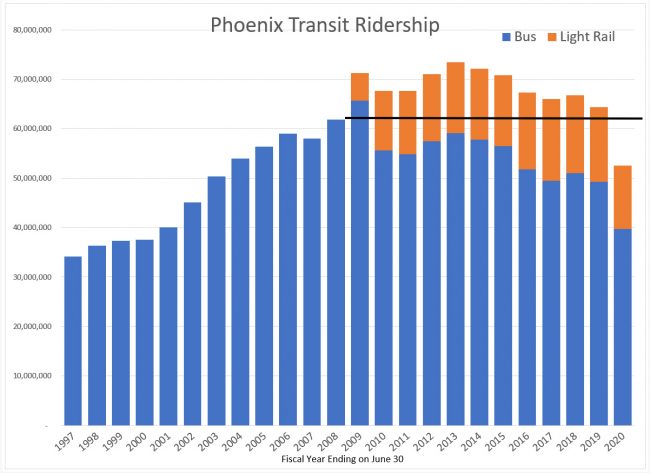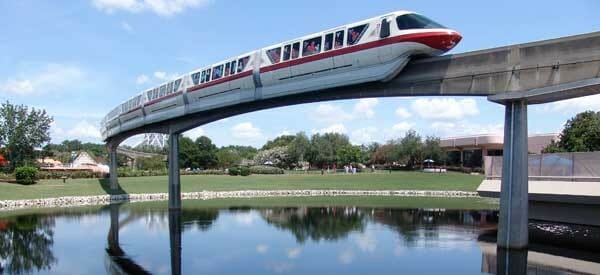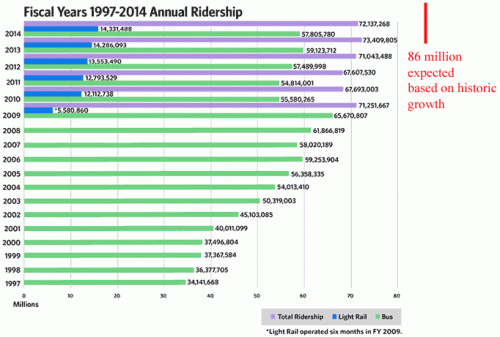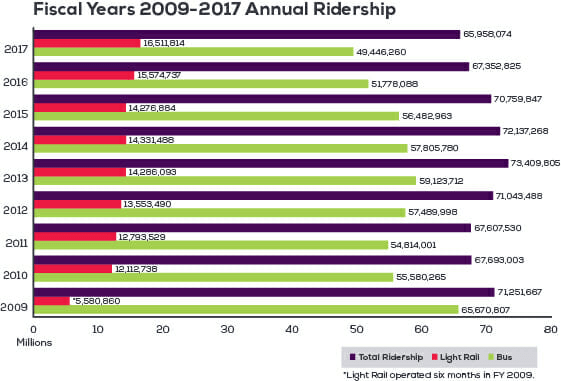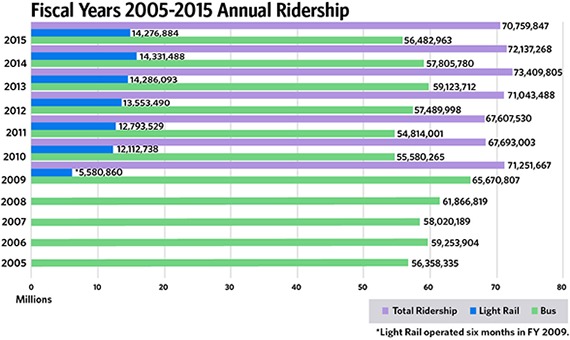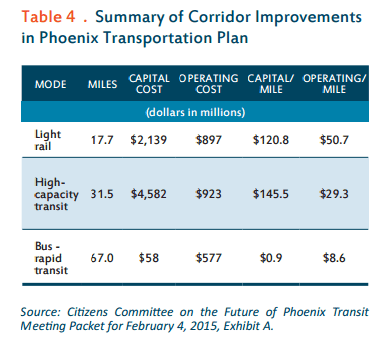Update on The Phoenix Light Rail Fail: @valleymetro FY 2021 Report
The previous annual installment in this series was here.
Well, the Phoenix light rail system has hit new levels of fail that even I could not have projected. Here are the annual numbers updated for the most recent report:
Yes, I know that supporters will argue that the agency should get a "pass" due to COVID. I am willing to do so for the bus system, but not for light rail. Let me explain.
I have always been, perhaps unlikely for a libertarian, comfortable with some base level of public transportation. Lack of mobility can be a huge barrier to upward mobility and I can support public transit systems in major cities as a sensible anti-poverty program.
What I oppose is the replacement of relatively inexpensive and tremendously flexible bus transit systems with light rail. Light rail requires orders of magnitude more capital and operating cost per passenger (except perhaps in the absolute largest and densest cities, which does not include Phoenix). Light rail is limited by time and money and necessity to only a few routes. In almost no city outside the centers of the few largest cities (think Manhattan) has it ever been possible to develop a complete enough web for citizens to entirely give up a car. And light rail is absolutely inflexible -- once capacity is added on one route (for literally billions of dollars) it can't be moved where busses can be shifted easily from route to route. For example, on a days' notice we had bus routes going to the major local vaccination centers -- no way to do that with rail.
It has always seemed to me that light rail is a middle class boondoggle. White professionals kind of like the trains whereas they won't ride busses. The few light rail routes tend to follow middle class / professional commuting routes. Light rail gets professionals from home to office (after which they use their car for other sorts of trips) but does little to provide mobility for the poor to the doctor, to the store, to support services, etc. Worse, because light rail costs 10x or more per passenger than busses, the advent of light rail generally starves a transit agency of funds and causes them to cut back on busses to save money (because once the rail is laid, you can't really cut back on it). Look at the chart above, despite years of light rail extensions, total transit ridership in Phoenix stalled after growing for over a decade. Wealthy university students at ASU got a nice train to the downtown clubs, but the poor who depend on busses for basic mobility lost a lot of service and routes.
I will confess that I didn't anticipate a pandemic in my prior opposition to light rail, but it has been more proof of the light rail fail. Busses that are not needed are parked, sidelining a modest capital investment. But light rail is $2+ billion in capital investment lying dormant. With the middle class eschewing transit during COVID, transit is returned to its core function of providing essential mobility to the poor. But it can't do this as well as it used to because of the multi-billion dollar light rail capital albatross.

